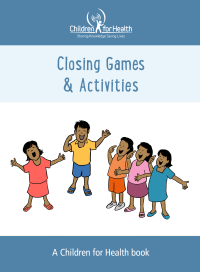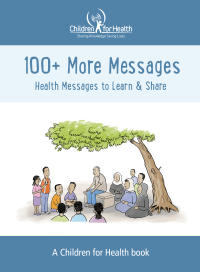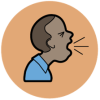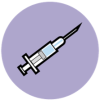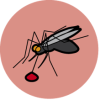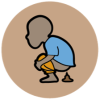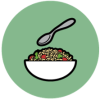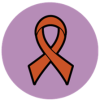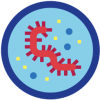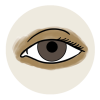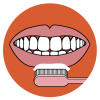Ebola
Ebola virus disease (EVD) is thankfully rare, but when someone does catch it can be devestating.
About half the people who catch EVD die from it, so in communuities where Ebola is active it is vital that children understand how to prevent the disease spreading and what to do if they or a loved one falls ill.
WHO says that, “[EVD] is transmitted to people from wild animals and then spreads in the human population through direct contact with the blood, secretions, organs or other bodily fluids of infected people, and with surfaces and materials (e.g. bedding, clothing) contaminated with these fluids.”
Read our Messages on Ebola for children to learn and share to the right. Scroll down to see ideas on what children can do to understand, find out more, take action and reflect on this topic.
Use the links below to browse our FREE resources to help children learn more, share their knowledge and become agents of change.
20 Messages on Ebola
- Ebola is a disease that makes people very ill and sometimes die.
- Ebola is caused by a virus you can’t see which stops a person’s body working properly.
- The Ebola virus lives inside fluids of an infected person (like blood, spit, pee, poo and vomit).
- There are many signs of Ebola: headache, fever, pains in the stomach and muscles, diarrhoea & vomiting.
- Ebola spreads when someone who is well touches the fluids of a person who has the Ebola virus.
- Someone can have the Ebola virus in their body for three weeks before they start to feel ill.
- It is only when a person starts to feel ill that they can spread Ebola to someone else.
- Do not touch people who are infected or anything they have touched or used. Keep young children away from those who are sick.
- Do not touch or eat bushmeat (wild meat like bats or monkeys) as this can have Ebola.
- Wash your hands with soap often and always after having a pee or poo (See Message 3 in our WASH topic).
- When someone has the signs of Ebola, a health worker is called to help to take the sick person to a clinic.
- At the clinic, health workers take a small amount of blood from the sick person to look for signs of Ebola in the blood. This is called testing.
- Health workers looking after people with Ebola wear special suits, masks and gloves so that they do not catch Ebola.
- Health workers are brave, kind people trying to stop Ebola spreading to others and making them sick.
- At the moment (October 2014), there is no medicine to cure people with Ebola, but scientists are working hard to create medicine and a vaccine.
- When someone dies from Ebola the body has a lot of the Ebola virus, so it should be put carefully into a bag and taken for burial.
- When someone gets well from Ebola and has been checked by a health worker and comes home they can be treated as normal.
- Someone who has recovered from Ebola is safe to touch and is no different to anyone else.
- If your relatives get Ebola, they need comforting words, but not to be touched or hugged.
- Young children do not understand Ebola and not to touch people they love. Help comfort them: play and sing.
Children can learn, collect & share these messages!
While teaching these messages, encourage children to…
MAKE their own Ebola Messages using their own words in their own language!
LEARN these messages so they never forget them!
ADD these messages to their collection!
SHARE these messages with other children and their families!
If your class or group is struggling to stay connected and engaged, we have loads of ideas for ideas to help them! Have a look at Closing Games & Activities.


Download these free materials now to help children learn and share these essential health messages. See our free resource section for more!





